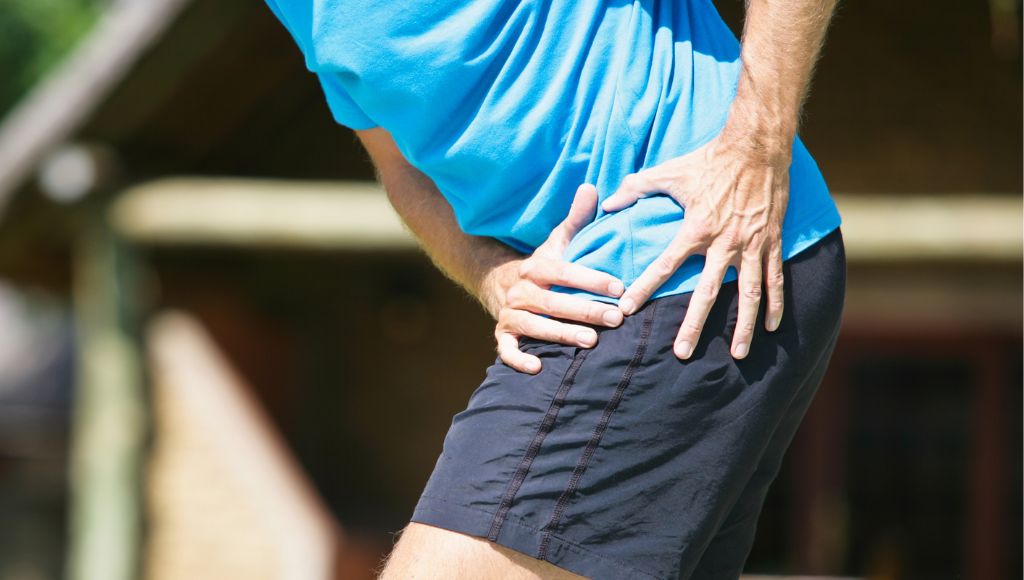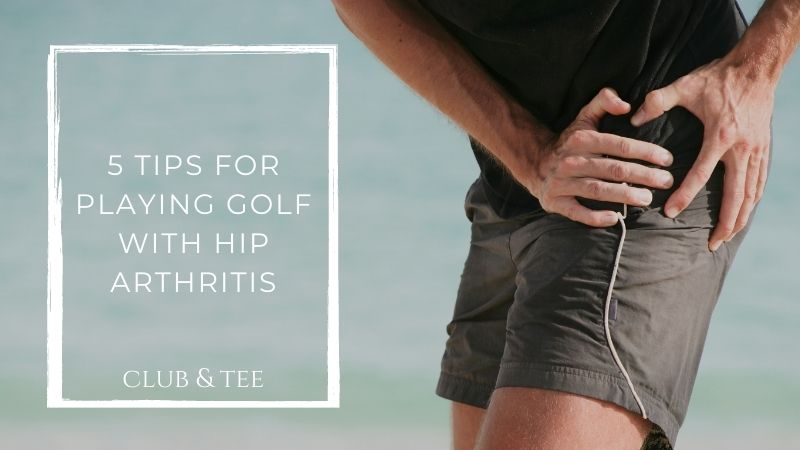Golf is a fun pastime for many, getting out on the course with your friends, for those with hip arthritis though, the sport can be a source of joint pain and discomfort. However, with a few adjustments and modifications, golfers with hip arthritis can still enjoy their golf game.
In this article, we will explore five tips for playing golf with hip arthritis, giving you the tools you need to continue playing. If you follow our advice we can show you the best way to enjoy golf with hip arthritis.
If you’re someone who loves golf but struggles with hip arthritis, this article is a must-read and could even improve your golf performance.
Can you play golf with hip arthritis?
Arthritis is a general term used to describe inflammation in the joints. Hip arthritis specifically affects the hip joints where the thigh bone meets the pelvis. When this joint becomes inflamed, it can cause pain, stiffness, and a limited range of motion.
There might be many factors that cause this condition such as wear and tear leading to degenerative arthritis. Golfers who suffer from this condition will require physical therapy and at its worst may require total hip replacement surgery.
As this joint is responsible for allowing us to move our legs it might be safe to assume you would be unable to play golf. To hit the ball the golf swing requires the upper body to turn, which involves a significant hip rotation and trunk twists.
However, it is possible to play golf with arthritis pain but you will need to make adjustments to how you play and prepare. These could include adapting your golf swing, changing the equipment you use, or using a ride-on cart.

Tips for playing golf with arthritic hips
Switch to lighter clubs
To play golf with hip arthritis you might want to switch to using irons with a graphite shaft in your golf bag. Lighter clubs are recommended for golfers with hip arthritis as they reduce the amount of stress and strain placed on the hip joint when hitting the ball.
This is also supported by research from the Arthritis Foundation. This is because these golf clubs require less energy to swing, therefore reducing the impact on hip pain and helping to prevent injuries.
Additionally, as these clubs are lighter with perimeter-weighted heads they require less grip strength, when combined with an oversize grip they can also help golfers who experience hand pain.
Use a ride on cart
Using a ride-on cart is a great solution for golfers with hip arthritis who want to continue playing golf, particularly for older golfers. This is because walking the golf course can put a significant amount of stress on all body parts but especially the hips, which can exacerbate pain and inflammation.
If you’re looking to continue playing golf with hip arthritis, a ride-on cart allows you to still enjoy the game without putting additional strain on your hips, much more than simply using a wheeled cart.

Adjust your golf swing – shorten follow through
Professional golf coaches often suggest adjusting the classic swing and shortening the follow-through for golfers with hip arthritis. This can help reduce the stress and impact on the hip joint. A shorter follow through can also help reduce the range of motion required in the hip, reducing pain and discomfort.
Additionally, adjusting the swing can help to reduce the rotation and twisting of the hip joint, further reducing stress and pain. Golfers traditionally finish the follow-through with the club in the one o’clock position with the natural momentum of the swing. We would recommend shortening your follow-through to finish in the three o’clock position when hitting the ball.
This encourages you to finish in the reverse c swing style and can take the pressure off the lumbar spine, right hip, and core muscles. This change will require some practice swings to perfect but by making these adjustments, you can continue to enjoy the game without exacerbating your condition.
Stretch and warm up
Stretching and warming up before playing golf is crucial for golfers with hip arthritis. Golf uses many powerful muscles and body parts, and stretching these correctly helps to increase blood flow to these muscles and joints. This can help to reduce stiffness and pain as well as make them better able to absorb shock during the swing.
Warming up also helps to prepare the leg muscles and knee joints for the physical demands of golf, which can help to prevent injury and back pain. If you take time to stretch and warm up before playing your hip pain can improve. This can help with your internal rotation, reduce pain and inflammation, and improve your overall performance on the course.
Overall, stretching and warming up is essential for golfers with hip arthritis to maintain their mobility and prevent further damage to the joints. In this very useful article, Health Line suggests easy ways to warm up before golf. Also by being warmed up and ready for your game you might even be able to improve your club head speed and hit the golf ball further.
Take breaks
Stretching and low-impact exercises during breaks can help improve flexibility but sometimes you will need to listen to your body and take a break. Golfers with hip arthritis should take breaks while playing to prevent further damage to the joint and reduce pain.
Constant movement and repetitive motions can cause inflammation and strain on the hip, leading to increased pain. Taking breaks allows the hip to rest and recover, reducing inflammation and preventing further injury. By incorporating regular breaks and stretching, golfers with hip arthritis can continue to enjoy the game while protecting their joint health.

FAQs
Can you golf with a hip replacement?
It is possible to still golf with a hip replacement. Professional golfer Davis Love III had a hip replacement aged 54, and although he hasn’t competed competitively he has been able to play golf.
The advice for returning to golf after a total hip replacement includes using longer tees to limit bending, reducing your hip rotation by keeping the weight on the rear leg, and using a lower-compression golf ball to reduce vibrations when hitting the ball.
Is golfing hard on the hips?
Golf can be hard on the hips due to the repetitive twisting and turning motion during swings and repetitive stress on the hip joints. This can lead to conditions such as hip pain, hip OA, and hip muscle strains.
To reduce the impact on the hips, it is recommended to use proper technique, warm up before playing, maintain flexibility and strength through exercise, and limit the frequency and duration of playing.
Does golf make arthritis worse?
If your arthritis is a result of playing too much and the repetitive motions involved in the sport then yes golf could make arthritis worse. However, golf as a low-impact exercise can also help to improve joint flexibility and reduce symptoms for those with arthritis. Individuals with arthritis need to consult with their healthcare provider before starting or returning to any physical activity, including golf.
Please remember, these are just general tips, if you are in pain, always refer to a professional sports medicine physician, or doctor trained in physical medicine to ensure you get the best advice or rehabilitation. This way all of the remedies and health benefits of playing golf can be discussed with a trained expert.
Final thoughts on playing golf with hip arthritis
We hope you have enjoyed reading our 5 tips for playing golf with hip arthritis. Playing golf with hip arthritis can be a challenge, but it doesn’t have to be impossible. You should take time to understand how the condition affects your hip and consult both your doctor and golf coach to develop a plan to adjust your swing and manage your symptoms.
This may include a combination of pain management techniques, physical therapy, and alternative golf equipment. With the right approach, you can still enjoy playing golf and improve your joint flexibility and mobility while reducing pain and discomfort. It’s important to listen to your body, take breaks when needed, and stay consistent with your management plan.

